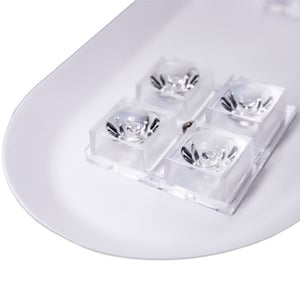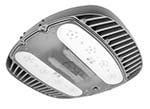Lighting professionals categorize glare into two types: disability glare and discomfort glare.
Disability and discomfort glare can be dangerous in the industrial workplace.
Disability glare is the blinding effect of oncoming headlights on a highway. This impairment can affect a worker's ability to see obstacles.
Discomfort glare refers to the sensation caused by exposure to bright lights. Improper lighting installations can contribute to discomfort glare.
Glare can be a major safety concern.
It can impair a person's ability to detect hazards, cause distractions, and create fatigue. Installations in the 8-12 foot mounting height range can be of particular concern. This mounting height is typical for walkways, platforms, stairs, modular buildings, and more.
Secondary optics, full cutoff, and tilting control can reduce discomfort glare in LEDs. Diffused or textured lenses further improve operator comfort. They increase the size of light-emitting surfaces and reduce LED pixelation effects. These design considerations mitigate glare and provide visual comfort and safety for users.
Understanding glare in the industrial sector.
Understanding the different types of glare and their causes is vital to worksite safety. This leads to effective solutions through detailed lighting designs. Nemalux helps create lighting environments that are appealing, safe, and comfortable for users.


